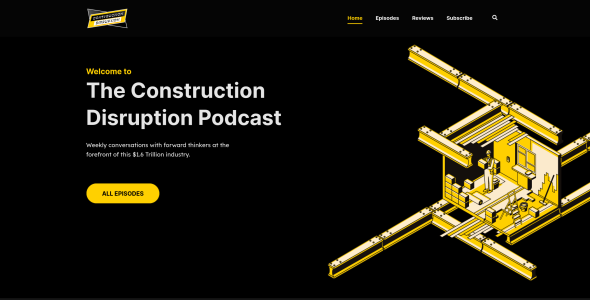Starting a podcast is a great way to build an audience, explore your passion, and generate income. These days, podcasting is becoming easier to start with. With entry barriers that become low or non-existent, and costs can be limited to a minimum, anyone can start a podcast from their own home. You don’t even need a fully sound-proof and professional podcast studio. Having said that, with millions of podcasts available, your show might be just a drop in a sea of shows. Knowing where to post your podcast is key for early growth. You’ll want to submit your podcasts to as many different places and get as many eyes (and ears) on it right from the get go.
Fortunately, there are plenty of places to post your show. Most people often start with distribution platforms like Spotify, Apple Podcasts, Google Podcasts etc. Then you can launch a podcast website, share episodes on social media, or get cross promoted on other shows.
In this post, we’ll take a closer look at where to post your podcast online and give a bunch of recommendations for places you can submit your show to. Let’s get started!
1. Podcast Platforms & Directories

Podcast directories (or distribution platforms) are probably the most common place listeners find and consume audio-based shows. Here, podcasts by thousands (if not millions?) of creators are aggregated to a handful of platforms, where they tend to be categorized by genre. Typically, users can browse through a list of podcasts and subscribe to different shows via their favorite app. They can browse through new podcasts getting published seeing the show name, the podcast description and cover art before giving it a listen.
In this section, Spotify, Apple Podcasts and Google Podcasts are probably the most popular ones, but there are tons of different distribution platforms to choose from. Our recommendation is to simply submit it to as many platforms as you can – the more the merrier. Other platforms like TuneIn, Stitcher, Amazon Music, Podchaser and others may be slightly less popular than Spotify or Apple, but we’re still talking about millions of potential listeners. If you can get your show listed in more places, there’s a higher chance to catch a few (or many) more listeners.
The main benefit of using podcast directories is that they enable you to access a huge audience. For example, the majority podcast listens in general come from platforms like Spotify and Apple Podcasts. Therefore, it’s convenient for you to meet listeners at the platform where they’re already active and used-to.
There are a few ways to get your show listed on those platforms. If your podcast hosting provider is offering automatic publishing to these directories, there shouldn’t be much you need to do on your own. Otherwise, you’ll have to set up an account on Apple Podcasts, Spotify for Podcasters and others, and submit your show’s RSS feed URL. This way, your podcast will automatically update when you publish new episodes.
2. A Podcast Website
One of the downsides of using podcast directories is that you lack control over the way your podcast appears. You don’t get a lot of customization options beyond just adding your basic podcast information and upload your episodes. What’s more, you’ll be just one small show out of millions of podcasts, so it may be hard to really stand out. That’s why it’s a really smart idea to create your own podcast website. This gives you complete creative freedom.
Better yet, you can utilize SEO best practices to make your podcast more visible to new users that may eventually find your show via search engines. You can do this by setting each episode up on a dedicated web page that targets different keywords. Plus, you can populate your content with internal links.
With a website, you control the design language, you have your own domain/URL, you can display reviews about your podcast, let visitors contact you directly, or simply include different types of content (like a full blog, videos, attachments etc.)
However, if you’re a beginner, you might not know how to create a website. The good news is it’s easy when you use an easy website builder like Podcastpage:
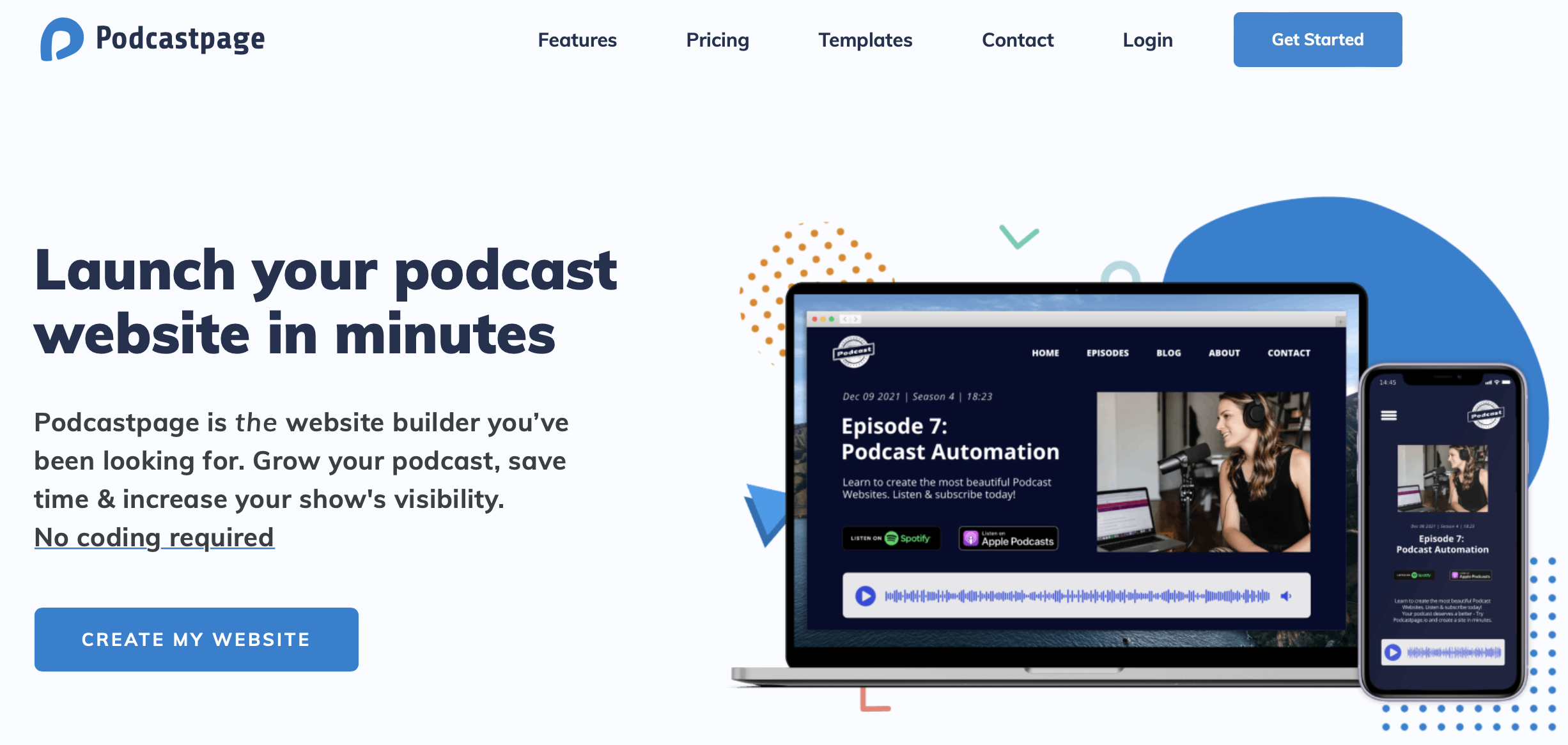
Podcastpage is specifically designed for podcast websites, so you can access plenty of useful features like a customizable audio player and automatic episode sync. It’a also super simple to get started thanks to our range of beautiful podcast website templates. You won’t need to have any prior experience with website or technical knowledge – all the hard work is pretty much done for you.
3. Social Networks
While you can’t post your entire episode on most social networks, you can use them to promote your show. For example, you can create short posts that feature links to your latest episodes. This way, you can encourage users to check out your podcast.
Facebook is still the most popular social site, so this is where you can find the greatest exposure. However, Twitter and Instagram are also great options:

Additionally, social media can help grow your podcast since certain platforms like Instagram enable you to use hashtags. You can even implement keywords in hashtags and descriptions to connect with users that are interested in your content.
Even better, you can post a snippet of your show as an enticing sneak preview. It can also be a good idea to share this snippet in video format to make it more visual and engaging.
Furthermore, due to the interactive nature of social networks, you can use them to form meaningful connections with your audience. For example, you can share milestones, respond to comments, and sprinkle humor into your posts.
4. YouTube
While YouTube is technically a social network, it deserves special attention because it also functions as a search engine like Google. This means that visitors use keywords and search terms to look up content.
Therefore, YouTube presents a great opportunity to increase your discoverability. By slightly modifying some top podcast SEO strategies, you can make your show stand out in YouTube search results pages.
For instance, you can use a free YouTube keyword tool to identify relevant terms and phrases:
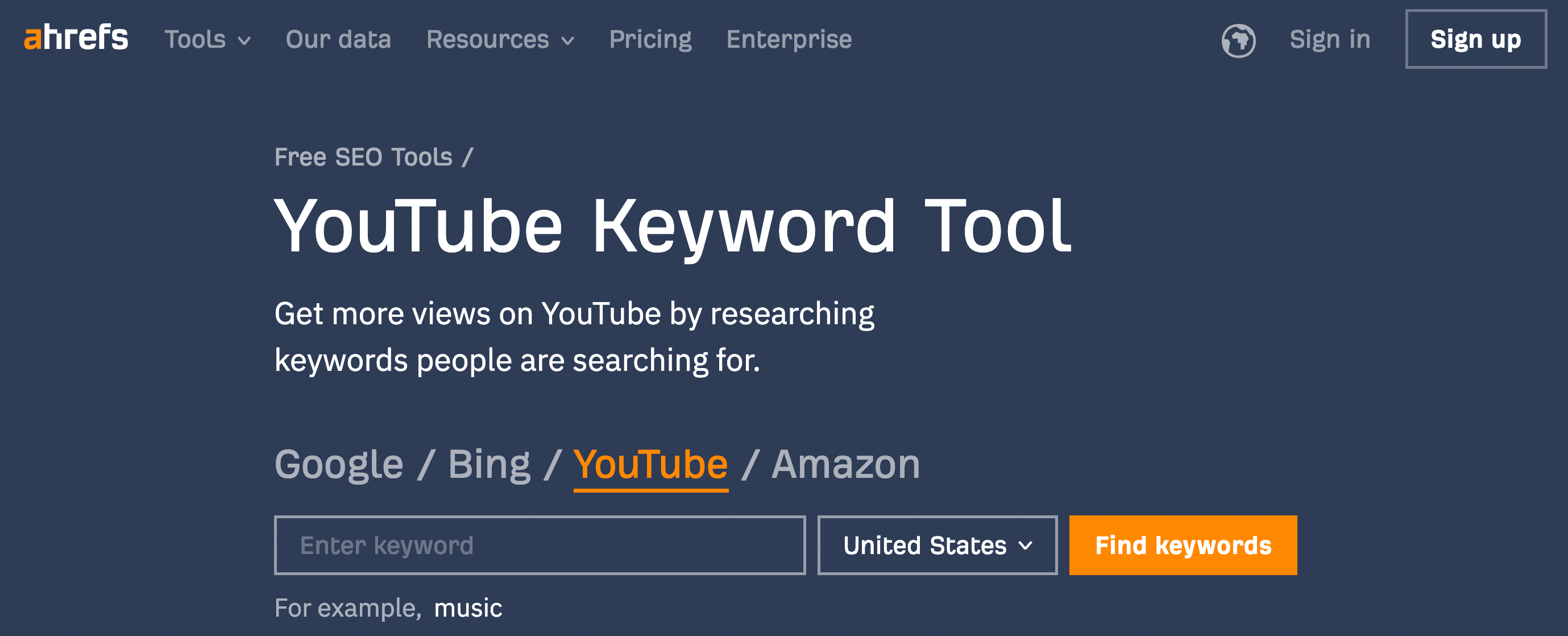
Then, you can include keywords in written content like titles, descriptions, and transcripts. This way, you’ll be able to more effectively attract attention and grow your audience.
Better yet, YouTube allows you to post your entire podcast episode. Alternatively, you can create YouTube Shorts, sharing only the highlights:
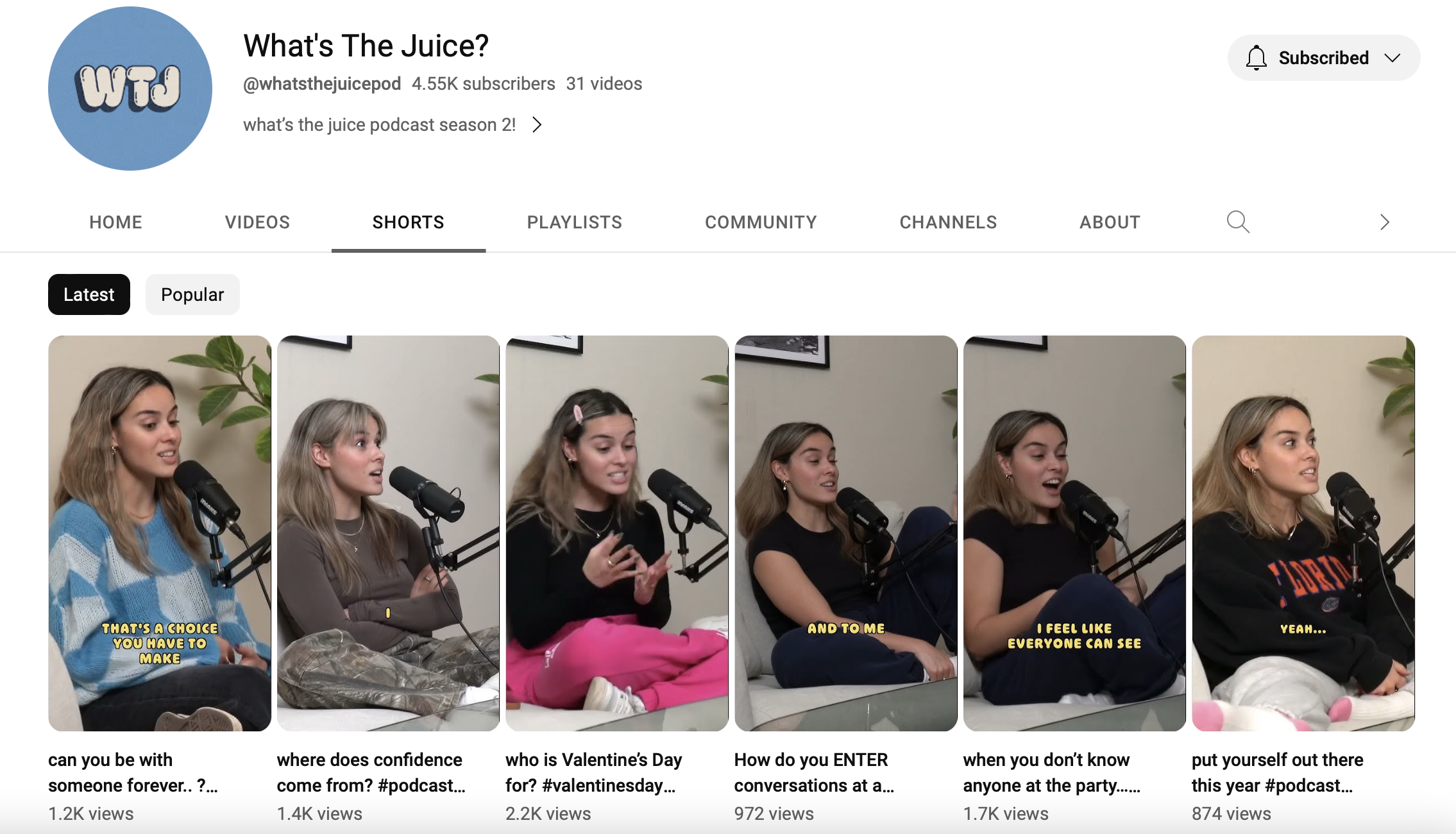
Plus, if at some point you decide to create a full video podcast, YouTube is able to support that venture.
Video podcasts are a great way to take your show to the next level and build stronger connections with your listeners. What’s more, with a Podcastpage website, you can easily import your YouTube channel to your website.
5. Newsletters
A podcast newsletter is a great place to share your episodes since it can be sent straight to your subscribers’ inboxes. This makes it easy and convenient for existing listeners to engage with new content.
Better yet, you can automate newsletters, delivering them weekly or monthly at specific time. You can use newsletters to share company news, nurture leads, create behind-the-scenes content, and more:
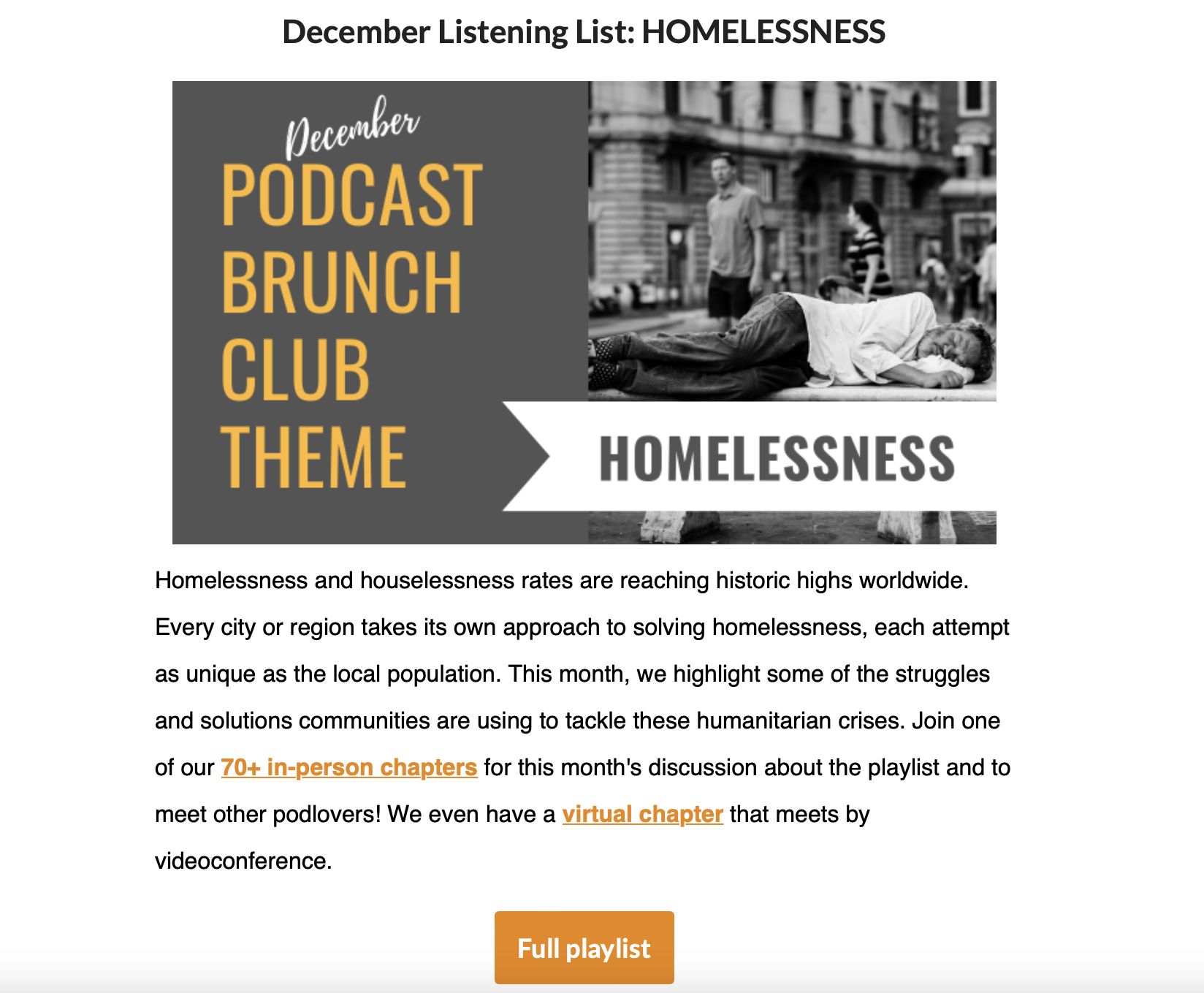
By delivering valuable content and utilizing personalization, newsletters are an excellent way to build trust and loyalty with your community. What’s more, by creating a podcast newsletter, you’ll give yourself an extra place to drive traffic to your latest episodes, your website, or your social accounts.
The easiest way to start is by building a podcast website. Then, design a dedicated landing page with a ‘subscribe’ form to collect email addresses. Lastly, you’ll want to connect your form with an email marketing provider like MailChimp,or ConvertKit.
6. Podcast Communities
Podcast communities are platforms where you can connect with other podcasters. Therefore, they’re a great place to post your podcast. Communities enable you to strike up conversations with like-minded people, ask questions, share advice, and gain support.
Some of the most popular podcast communities can be found on LinkedIn Groups, Facebook Groups, Twitter Communities, Reddit, or even Slack/Discord channels.
However, it’s best to establish yourself within the group before you promote your show. To do this, consider introducing yourself, helping out others, and answering questions.
One of the best parts about using communities is that you can link to your episodes as a way to answer a question or solve an issue. Of course, it’s important to make sure that your episode is directly relevant to the question.
Another way to improve your chances of success in communities is to show appreciation. When you post links to your episodes, remember to thank members for taking the time to check them out. It’s also important to read the terms and conditions to check if you’re allowed to post links to your podcast.
Conclusion
To launch a successful podcast, you’ll need to carefully plan episodes and record quality material. However, once you’ve reached this stage, you might not know where to post your podcast. Fortunately, there are tons of podcast platforms to choose from.
To recap, here are six places to post a podcast:
- Directories like Apple Podcasts and Spotify.
- Build a podcast website.
- Social networks.
- YouTube.
- Newsletters.
- Podcast communities.
Looking for a place to easily post your podcast while still maintaining creative control? When you build a website with Podcastpage, it’s simple. Get started today and gain access to beautiful templates, a customizable audio player, easy episode imports, and more!



